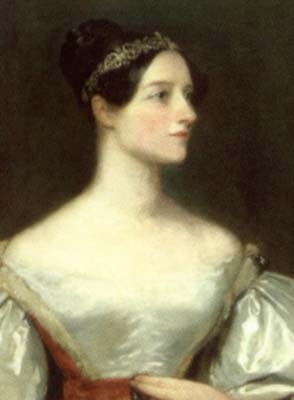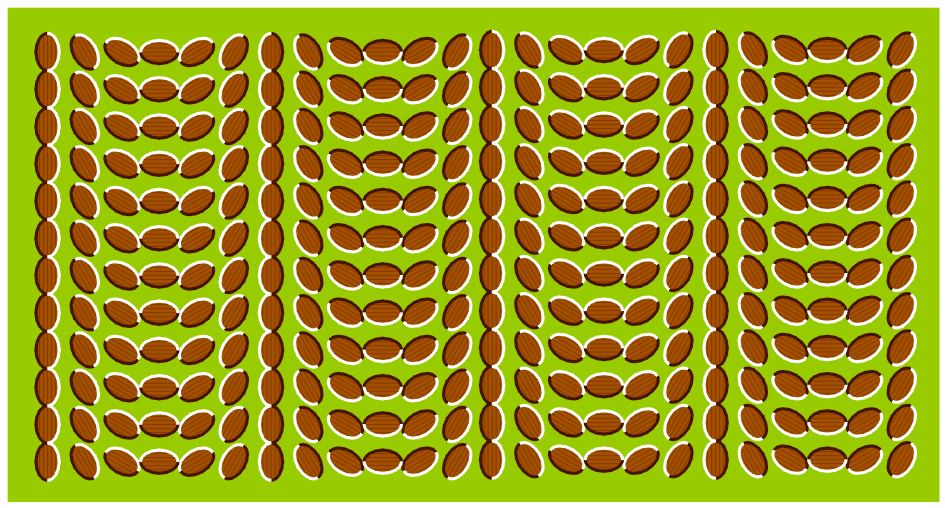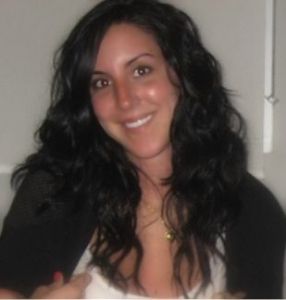Today, Ms. Lovelace has her very own Day, and that's just great, since until recently, no one besides Babbage had any idea who she was.
I first learned about Ada Lovelace while writing What's the Big Idea? The book highlights the most significant inventions since the wheel, or, as the subtitle trumpets, 'Inventions that changed life on Earth forever.'
When doing the writing, my major problem was that there is a very heavy male presence in the story of inventions. Not that I have anything against men, mind you, even if I am a raging feminist. The problem was that when I write, I don't want to perpetuate a status quo that gives my fair sex short shrift. And clearly (or was it clear?) women were being given shrift so short you couldn't even make a blankie with it.
The imbalance became particularly obvious when I was considering which individual inventors would be glorified on double-page spreads throughout the book. Bell, Edison, and da Vinci? Or Faraday, Gates and Galileo? Which women would get their own super spotlights? Er...are there any women who qualify for the job? Hellooooo....work with me here.....I'm looking for you.....
There it was - the hard indisputable fact: Men do dominate the history of invention. This is a reality that cannot be denied.
So what's a writer to do? Especially if said writer is a committed feminist, but one who is equally committed to intellectual honesty?
We (and when I say we, I mean my coincidentally all-female team of editors and me) wrestled with these choices. Back and forth, back and forth. Could we legitimately present Ada Lovelace on a full spread, and omit Bell? Were her contributions really more important than Alex G.B.'s?
Why not present Marie Curie instead? Well, though she was a brilliant scientist, she wasn't really an inventor...and neither was Lovelace if you want to be picky-snicky about it.
And besides, I don't think it's right to include Lovelace and ding Babbage, who really have to be side by side... He'd started out with a key invention page of his own, and didn't make the page-count cut. So how could we put Lovelace forward while disappearing Babbage? THAT would be wrong.
In the end, we opted for presenting our dilemma straight up to the reader.
I wrote a detailed intro called, "Hey? Where are all the women?" which we positioned right at the front of the book. It squarely addresses the dearth of female names in the text, without dissembling.
Fact 1: The intro points out that many of the world's most pervasive and life-changing inventions - the loom, the needle, cookery, pottery - were all probably conceived and developed by women. Their names are lost in the mists of time.
Fact 2: Many other inventions by women were appropriated by men (I would argue paper falls in this category) - after all, women were men's property, so their innovations were too.
Fact 3: Later on, women were denied the opportunity to experiment in the way men did - hard to imagine a 17th century woman with the leisure time of an Isaac Newton...or access to lab equipment!
And while the men were discussing theoretical stuff, women were "on the ground", so to speak, trying to apply new technology to everyday problems such as cooking - difficulties they were dealing with every day, while their menfolk smoked cigars. So that's why, in the Victorian and post-Victorian era, you find women inventors developing stuff like the stoves, vacuum cleaners, windshield wipers, blenders, dishwashers...
And Fact 4: Women are still denied some of the same opportunities as men in high-tech fields where today's innovations are taking place.
So, I asked readers to consider the information presented in the book in light of these facts. Many of the inventions presented, especially in the first third of the book, were actually female innovations, even if there is no celebrated name attached to them.
And while I tried to include women where it made sense (ie., when their inventions were life-changing, or just plain fun and interesting to read about - this is a kids' book after all), I didn't force it. I chose telephones over electric stoves, and batteries over blenders.
In the end, I included as many individual women in What's the Big Idea? as I could without feeling like I was compromising the overall integrity of the book. I hope readers will agree.
Note: The original version of this post appeared in the comment thread at the Blog I.N.K., Interesting Non-Fiction for Kids. Check it out - it's a great site!

























